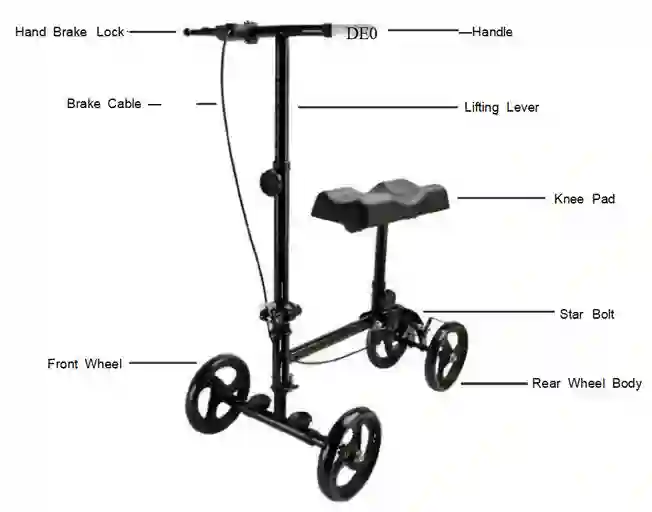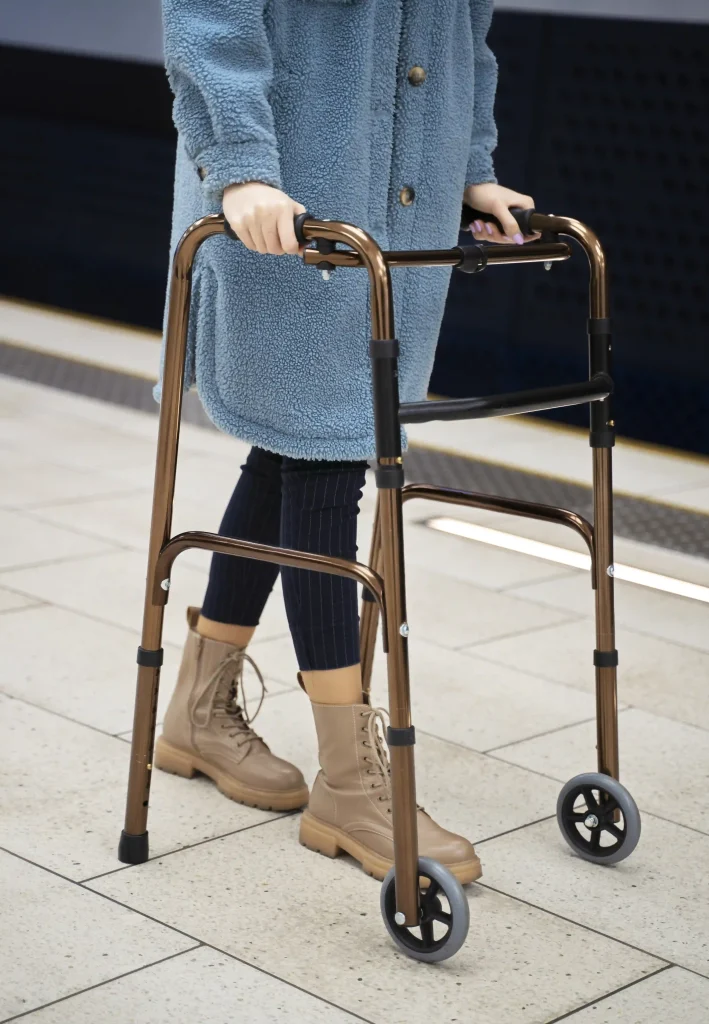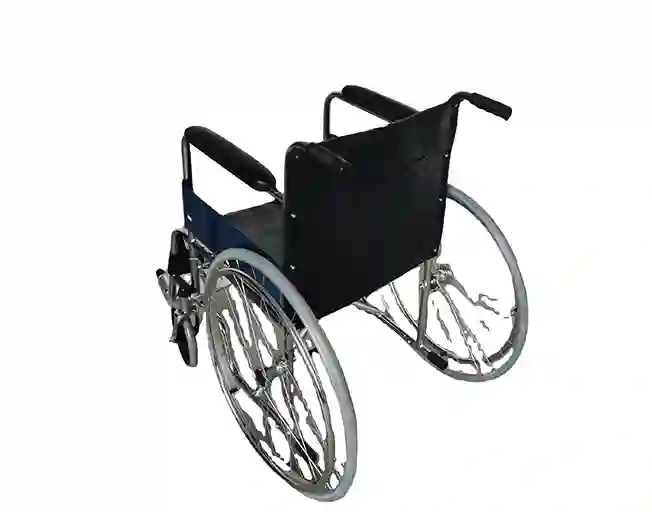How medical rehab walkers aid in faster post-surgery rehabilitation
Time : Sep 26, 2025 View : 1,381
The recovery stage following surgery demands a strategic method for movement and physical therapy rehabilitation. Medical rehab walkers serve as the most effective tool for supporting patients during their recovery process. The devices function to help patients regain independence while supporting their healing process and minimizing postoperative complications. Patients and caregivers who understand medical rehab walkers’ operational features and advantages can choose better recovery paths that result in quicker and safer healing.

The Role of Mobility in Post-Surgery Recovery
The process of post-operative rehabilitation heavily depends on mobility functions. Physical recovery benefits from mobility while the practice also enhances mental health outcomes.
Importance of Early Mobilization After Surgery
The medical community has established early mobilization as the key factor for achieving the best possible recovery results. The early start of movement after surgery enables better blood flow and prevents blood clot formation and reduces the risk of respiratory problems according to rehabilitation specialists. Early mobilization enables patients to rebuild their physical self-assurance which stands as a vital element for achieving lasting recovery success.
Consequences of Delayed or Limited Mobility
The practice of delaying mobility creates multiple negative outcomes which include muscle wasting and joint stiffness and pulmonary infections and pressure ulcers. The extended period of immobility creates psychological problems through depression and anxiety because patients need to rely on others for help. The risks demonstrate why safe walking aids should be included in the initial stages of recovery planning.
Medical Rehab Walkers and Their Functionality
Medical rehab walkers exist to help people who need assistance walking because they have surgery recovery needs or because their age or illness causes mobility problems.
Types of Medical Rehab Walkers
Walkers exist in multiple forms which serve various requirements.
Standard Walkers
Standard walkers consist of four non-wheeled legs which provide the highest level of stability. Users need to lift the device with each step when using this product because it works best for people who require strong support but still have enough upper body strength.
Wheeled Walkers
The design features two front wheels and two back legs with rubber tips. The wheels enable smooth movement by keeping the frame on the ground while providing excellent stability.
Rollators
The four-wheeled design of Rollators includes hand-operated brakes and seating options with storage compartments. The Rollator provides suitable support for people who require minimal assistance while offering additional stability and periodic rest opportunities during their walks.
Key Features That Support Rehabilitation
A well-designed walker contains safety-enhancing and comfort-promoting elements which improve the user experience.
Adjustable Height and Ergonomic Design
Walkers with adjustable height enable users to maintain proper posture which helps prevent back and shoulder strain during walking. The ergonomic hand grips on these devices reduce wrist pressure to provide additional comfort to users.
Stability and Weight Distribution
The wide base design provides balanced weight distribution that prevents tipping or falling which is essential for patients who have limited balance control after surgery.
Benefits of Using Medical Rehab Walkers During Recovery
Medical rehab walkers deliver specific health advantages which enhance both the speed and quality of recovery.
Enhancing Balance and Preventing Falls
Walkers function as stability devices which enable users to stay balanced when they walk through different walking environments. The use of walkers decreases the risk of falls which stands as a primary reason for hospital readmissions following surgical procedures.
Reducing Muscle Atrophy and Joint Stiffness
Regular physical activity helps walkers maintain their muscle mass and joint flexibility which protects them from long-term disability due to disuse syndromes.
Boosting Confidence and Independence in Movement
Patients gain control over their movements through the use of a walker which leads to improved psychological well-being and enhanced motivation for rehabilitation adherence.

Medical Rehab Walkers for Different Surgical Recoveries
The selection of an appropriate walker depends on the specific needs of each surgery because different procedures require varying degrees of mobility assistance.
Orthopedic Surgeries (e.g., Hip, Knee Replacement)
People who have undergone hip or knee replacement surgery need walkers that are strong enough to handle their body weight. Standard walkers and wheeled walkers provide the best support for patients who need to walk after surgery.
Neurological Conditions (e.g., Stroke, Spinal Surgery)
People who have neurological conditions like stroke or spinal surgery recovery benefit from using rollators with seats because these devices enable them to rest often while helping them maintain an upright position.
Cardiopulmonary Rehabilitation
People who have undergone cardiac bypass or pulmonary procedures with restricted endurance can use lightweight rollators to control their fatigue while staying mobile.
Guidelines for Selecting the Right Walker for Recovery Needs
The selection of an appropriate medical rehab walker requires assessment of various elements which match specific requirements.
Consulting Healthcare Professionals for Recommendations
Your physician or physiotherapist should be your first point of contact because they know your medical background and what you want to achieve through rehabilitation. They will suggest particular models that match your physical abilities.
Evaluating Physical Condition and Mobility Goals
Your weight-bearing capacity for limbs and upper body strength and endurance level and need for seated breaks during walking determine which walker model will work best for you.
Considering Home Environment and Daily Routines
Check your hallway and stair width because narrow spaces require compact models. The decision between indoor and outdoor use determines the wheel size you need to select.
Tips for Safe and Effective Use of Medical Rehab Walkers
The correct application of medical rehab walkers leads to their highest effectiveness and reduces the chance of accidents.
Proper Walking Techniques with a Walker
When walking forward keep both feet inside the walker frame at all times. Move the walker forward before stepping into it since walking too close to the back of the walker creates an unstable position.
Common Mistakes to Avoid During Use
The user should exercise caution when using one-sided or unbalanced surfaces. Users should perform scheduled maintenance tasks to check screw tightness and wheel operation status when applicable.
Maintenance and Regular Safety Checks
The wheelchair requires periodic safety inspections because of safety concerns that also apply to walkers which should have their joints checked for security and their grips inspected for damage and their standard or wheeled rubber tips checked for wear and their brakes verified for proper operation on rollators.
How Xunyu Medical Supports Post-Surgical Rehabilitation Needs
The company Foshan Xunyu Medical Technology Co., Ltd. operates as a manufacturer of assistive equipment for elderly people. The company produces medical rehab walkers as part of their product range which also includes crutches and bedside handrails and bath chairs and toilet risers and additional items that focus on user-friendly design.
Overview of Xunyu Medical’s Product Offerings
Product classification:
- Bedside handrails
- Crutch
- Wheelchair
- Bath chair
- Walking aids
The diverse selection of products provides complete protection for all recovery stages starting from bathroom safety through to daily walking support.
Commitment to Quality, Safety, and Innovation in Mobility Solutions
Xunyu Medical established itself to focus on technological advancement through continuous product design improvement based on elderly user feedback from across the globe. Our team specializes in assistive medical equipment including wheelchairs and crutches while providing customized recommendations for mobility solutions that meet worldwide safety and durability requirements.

Conclusion: Promoting Faster Recovery with the Right Support Tools
Medical rehab walkers function as essential tools for patients to move safely from hospital beds to their normal daily activities. The company representative stated that their organization works to provide dependable products which support senior independence.
Patients who receive these tools through personalized recovery plans under professional supervision will achieve physical mobility while developing essential confidence needed for complete healing.
FAQs:
Q1: What is the most suitable walker for knee replacement surgery recovery?
A: A standard walker is best for initial stability during the early stages of knee replacement recovery. As strength improves, transitioning to a wheeled walker offers greater convenience while maintaining safety.
Q2: Is it safe to use a rollator inside my home?
A: Yes! The use of rollators inside homes becomes possible when your living space allows sufficient room to move around. You should select indoor-focused compact rollator models when your home space is restricted.
Q3: What are the indicators that I should stop using my walker?
A: Your healthcare provider needs to be consulted before you stop using your walker. The signs that indicate it is time to stop using a walker include better balance control and stronger muscles and the ability to walk short distances without pain or loss of stability.


